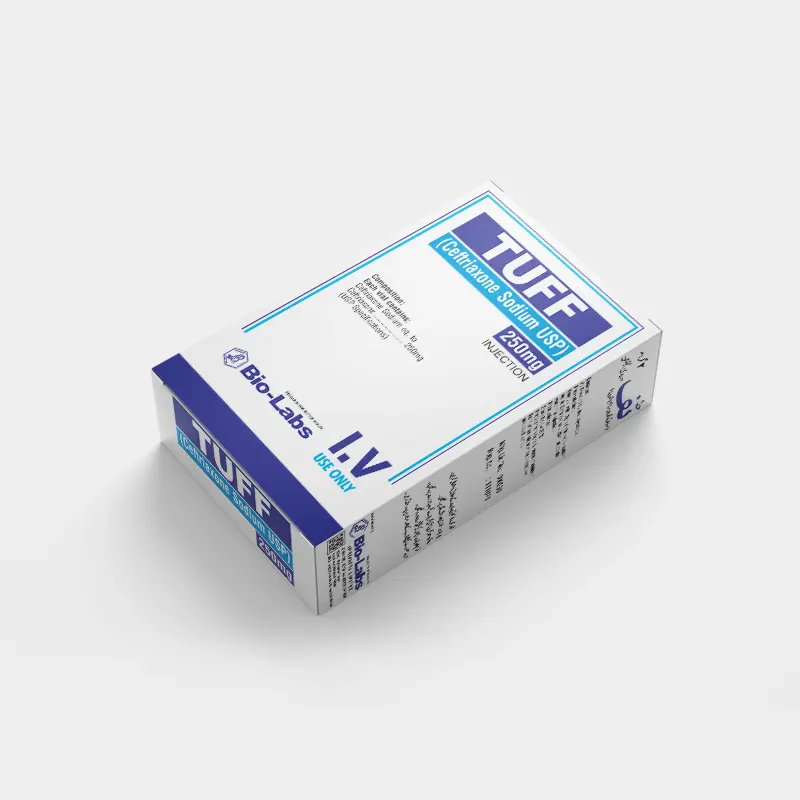
Each Vial Contains
Each Vial Contains:
Ceftriaxone Sodium equivalent to
Ceftriaxone ………….. 250 mg
(USP Specifications)
Ceftriaxone Sodium equivalent to
Ceftriaxone 250mg
1) An effective broad-spectrum antibacterial that is used to treat various bacterial infections.
2) It even treats severe and life-threatening conditions like E. coli, meningitis, and pneumonia.
3) It is also used to treat infections of people who have a certain type of surgery.
An antibacterial drug belongs to the cephalosporin drug class, used to treat lower respiratory tract infections, urinary tract infections, skin and skin structure infections, bacterial septicemia, meningitis, bone and joint infections, pelvic inflammatory disease, urinary tract infections.
1) Works by inhibiting the mucopeptide synthesis in the bacterial cell wall.
2) Stops the growth of bacteria.
3) Its long half-life is unique among third-generation cephalosporin.
Ceftriaxone is primarily eliminated in the urine (33-67%). The remainder is eliminated through secretion in the bile and removed from the body via the feces. The elimination half-life of ceftriaxone is 5.8-8.7 hours.
1) The injection should be administered over 5 minutes, directly into the vein or via the tubing of an intravenous infusion. Ceftriaxone can be administered by intravenous infusion over at least 30 minutes (preferred route) or by slow intravenous injection over 5 minutes.
2) Intravenous doses of 50 mg/kg or more in infants and children up to 12 years of age should be given by infusion.
3) Intramuscular administration should be considered when the intravenous route is not possible or less appropriate for the patient. For doses greater than 2 g, intravenous administration should be used.
4) For pre-operative prophylaxis of surgical site infections, ceftriaxone should be administered 30-90 minutes prior to surgery.
1) Ceftriaxone is contraindicated in neonates (≤ 28 days).
2) Premature neonates up to a postmenstrual age of 41 weeks.
Hypersensitivity Reactions
In case of severe hypersensitivity reactions, treatment with ceftriaxone must be discontinued immediately and adequate emergency measures must be initiated. Before beginning treatment, it should be established whether the patient has a history of severe hypersensitivity reactions to ceftriaxone, to other cephalosporins or to any other type of beta-lactam agent. Caution should be used if ceftriaxone is given to patients with a history of non-severe hypersensitivity to other beta-lactam agents.
Ceftriaxone is contraindicated in premature and full-term neonates at risk of developing bilirubin encephalopathy.